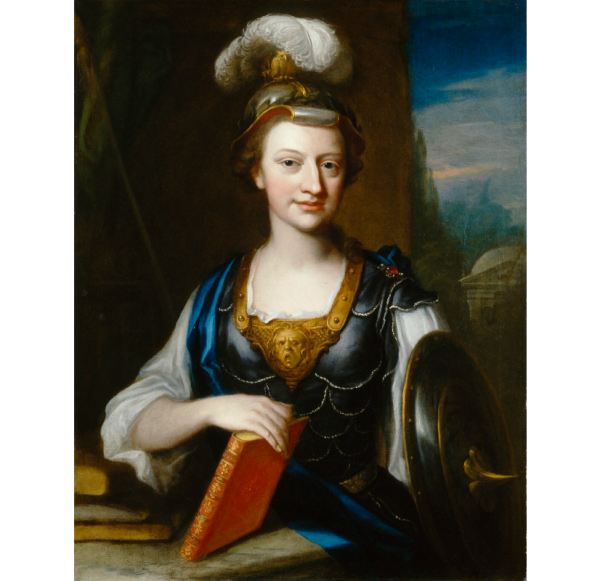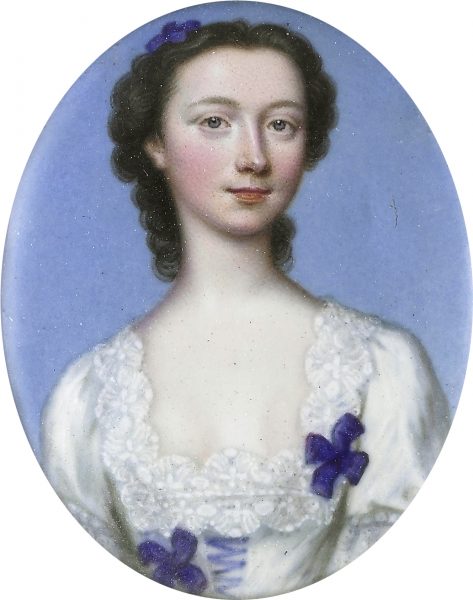Melancholy was a curious thing in the late eighteenth century. As well as conveying a feeling of ‘pensive sadness’ and a sense of the bittersweet – akin to how we might think of it today – it also retained its more negative and medicalised inflections we would now identify with anxiety and depression. This ambiguity allowed for several layered meanings to be conveyed at once by those who discussed it; it connoted a mixture of pleasure, pain and danger. Nowhere is this more evident than in conversations around solitude. Solitude was the perfect ingredient to stimulate melancholy, and thus was both desired and feared in eighteenth century writings. As we know all too well today, solitude and isolation can have both pleasing and debilitating effects on the mind, but the discourses of melancholy gave eighteenth century writers a unique way of conveying its enticing dangers, and perhaps more interestingly, a way of sharing that solitude with certain others. The witty and eloquent correspondence between writers Elizabeth Carter and Catherine Talbot provides a fascinating window into this world of melancholy and solitude. A collection of their correspondence, which began soon after they met in 1741 and continued right up until Talbot’s death in 1770, was published soon after Elizabeth Carter’s death in 1806. It was edited rather ham-fistedly by Carter’s nephew, but it still serves as an intriguing window into their intimate and romantic relationship. After meeting in 1741, their shared interest in intellectual discussion, translation, reading and writing – as well as fantasy and wit – lead them to be fast friends, and the letters grow increasingly passionate in their expression of affection over the following several decades.[1]

One of the first striking things throughout the epistolary collection is the consistent sharing of their physical, mental, and emotional states. This was not particularly uncommon for close correspondents, but the detail and intimacy of their expressions do stand out, particularly in the sharing of their low spirits and their tokens (both literal and figurative) of affection. It is in this context of confession, sympathy, and explicit care for one another that their insights on the joys and perils of solitude take place.

As has already been seen on this blog, solitude and fantasy have long been close companions. Nature, too, has often been seen as solitude-enhancing experience, perhaps even more so in a pandemic (though aside from grocery shopping I find the only reason to go outside during a lockdown is for reluctant vitamin D strolls). For Carter, as she reveals early in her correspondence with Talbot, a ‘solitary moonlight walk… helps to indulge the melancholy turn of my thoughts by a view of that element which has separated me for ever, from a brother extremely dear to me’.[2] In this instance, solitude and nature accentuate Carter’s melancholy and nostalgia, turning it into something pleasing and to be relished. Talbot, however, appears to think differently, responding with ‘too much indulgence of these sad and soothing meditations should not be allowed, and I should rather recommend all sorts of idleness to you.’[3] Talbot was notoriously industrious, anxious about all forms of idleness permeating English society, so this statement suggests she took the dangers of solitary fancies particularly seriously.[4]

While solitude could stimulate imagination, it could also be a dire consequence of imaginative reverie. Indeed, even Carter acknowledges at times that imagination is a fickle beast and can do more harm than good. For them both, indulging in melancholy fancies – whether in solitude or surrounded by company – can produce a state of mental solitude, one that is debilitating rather than pleasing. Take, for instance, Carter’s confession that ‘A little while ago I was mightily disposed to be pleased with all I met with, and now, from the same principle I am pleased with nothing’.[5] This description of her ‘dolorous way’ precedes a musing on the dangers of dwelling on fantasy:
Tis surely a fatal error to give one’s self up to certain enchantments that lead the mind into fairy regions of dreams and shadows, where it is amused and fixed on imaginary forms of happiness and perfection, which vanish with the fickle cause that gave them being, and one is left in the midst of a wild perplexed solitude, astonished and utterly at a loss of what road to take, or where to meet with any object to divert it.[6]
Importantly, solitude in this context does not mean complete social isolation. Rather, it signifies journeying into one’s own head, becoming too introspective. Talbot responds sympathetically, writing:
I have felt a great deal of what you express… [upon] the destruction of my cloud-built castles and their airy inhabitants, I have fancied myself as you do, left in a dreary solitude… but with the help of some experience, much reflection, a little common sense, and a few plain books, I am grown in a happier state of mind…[7]
Fancy and imagination – particularly melancholy fancy (as rehearsed in the moonlight, or in regions of both dreams and shadows) – can provide momentary escape from the troubles of the world, but as they are inherently incorporeal, they will crumble and leave you with no bearing whatsoever. Talbot is by far the most vocal about mental discipline and duty when it comes to avoiding such mental solitude, and the sharing of such advice stems from bitter experience. A staunch critic of idleness and ‘fashionable’ spleen, she endeavoured to keep herself occupied in ‘noble pursuits’ that would improve her mind above all else.[8] Throughout her correspondence, duty and occupation are essential for avoiding melancholy fancy’s ‘soothing syren song’.[9] By turning to common sense and ‘plain books’ she brings herself back down to earth, escaping solitude without the need for actual company. But of course, these dialogues are just that – dialogues. Talbot and Carter’s confessions of their solitude to one another help bridge both the physical distance and mental distance between them through their expressions of sympathy, placing them on the same wavelength. We often think of ‘melancholics’ as being isolated and alone, but people suffering from low spirits or spleen often had a vast familial or social support network, and Talbot and Carter were lucky enough to be able to share their experiences of mental solitude with one another. Not only did this help improve their spirits (both through the receiving of sympathy and advice but also through the act of confession itself) but it also allowed for more intimate invitations to take place. For instance, on 24 May 1744, at 4am, Carter wrote to Talbot. She began:
I have a strong inclination, dear Miss Talbot, to visit you like an apparition at this unseasonable hour, which I may safely indulge as it will do you no harm, for I may talk to you as long as I please, without any danger of disturbing your slumbers, or depriving you of an agreeable dream.[10]
The gothic atmosphere of this romantic passage, of Carter visiting Talbot like a ghost in the night, suggests a desire for intimacy that might be deemed improper in contemporary polite society. Apparitions are melancholy in their own right, trapped behind an impenetrable barrier to the living world, so Carter’s use of this term not only adds to the romantic and fanciful image she is conjuring but also prevents the image from appearing too illicit. She is able to talk to and see, but not touch, Talbot. This keeps the passage rooted firmly in the romantic rather than erotic, a choice which may have been prudent due to the permeable nature of letters in the eighteenth century. Carter’s midnight solitude is tempered by both the fantasy of being with Talbot and the communication of her fantasy to Talbot herself, as she invites her to participate in her dream of sharing a companionable solitude.

Solitude which gives rise to sweet melancholy fantasies for these eighteenth-century writers may be dangerous and capable of inducing melancholy and solitude of an unhealthy kind, particularly for those with low spirits in the first place. But when that solitude is shared with a loved one, it can be worth the risk. Elizabeth Carter and Catherine Talbot shared their desires and states of mind throughout their thirty-year relationship, the letters themselves helping to create an imagined intimate space where they could be alone together despite their awareness for the dangers of melancholy reverie. In fact, their very awareness of the dangers of such fantasies highlights the significance of their relationship. For me, their correspondence indicates that paying attention to the social side of solitude, oxymoronic as it may seem, has much to reveal about how we navigate the fine line between isolation and solitariness, between distance and connection.
[1]Catherine Talbot and Elizabeth Carter. A Series of Letters Between Mrs. Elizabeth Carter and Miss Catherine Talbot from the year 1741 to 1770…. Published from the original manuscripts in the possession of the Rev. Montagu Pennington, M.A. F. C and J. Fivington, eds. London. 1809.
[2] Carter to Talbot, 5 November, 1741.
[3] Talbot to Carter, 7 January, 1742.
[4] Ylivuori Soile, “Time Management and Autonomous Subjectivity: Catherine Talbot, Politeness, and Self-Discipline as a Practice of Freedom” Journal of Early Modern Studies, 6, 2017. Pp. 113 – 132.
[5] Carter to Talbot, 20 September, 1745.
[6] Carter to Talbot, 20 September, 1745.
[7] Talbot to Carter, between September and November, 1745.
[8] Catherine Talbot, Essays on Various Subjects. By the author of reflections on the seven days of the week. Vol 1. Dublin, 1773. p. 2. Retrieved from Eighteenth Century Collections Online, June 2020.
[9] Talbot to Carter, 26 July, 1748.
[10] Carter to Talbot, May 1744.
Daniel Beaumont is a PhD candidate at the University of Auckland. He researches English women writers’ use and perceptions of melancholy and despair during the long eighteenth century.